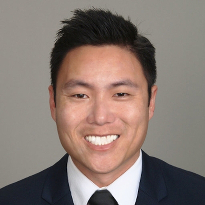Larry Wang describes his motivations for pursuing a MSK fellowship and why you may want to as well
My Story
Growing up, I wanted to be a professional tennis player, the next Michael Chang. My immigrant parents had introduced me to tennis at a young age and dutifully supported my passion early on -– enrolling me in lessons, learning the sport, and transporting me around all throughout California for tournaments. As a year-round sport, tennis was my life starting from the age of 7, but I was woefully ignorant to the importance of supplemental off court training and even extended breaks from playing. Unsurprisingly, my body began to break down by the time I was 13. I suffered many of the common overuse injuries that have since received increased public awareness, such as Osgood-Schlatter’s and Little Leaguer’s Shoulder and Elbow, with each injury increasingly devastating.
Initially unbeknownst to me, these injuries sparked an interest in the musculoskeletal system that grew over time, particularly after I participated in research in a cadaver biomechanics lab after college. To this day, I am still fascinated in the way the body works with an emphasis on the anatomy, physiology and pathology of the musculoskeletal system. It was this interest that initially steered me towards sports medicine/orthopedic surgery. It wasn’t until a chance opportunity for an elective radiology rotation in musculoskeletal radiology as an MS4 that I discovered the image-based intellectual challenge radiology provided. The ability to construct a clinical backstory based off of visual cues reminded me of the storylines I would construe when sneakily watching TV without sound as a child. Additionally, I quickly discovered that radiology mirrored the cerebral and individual nature of tennis, requiring an individual to juggle multiple decisions independently while incorporating second by second input and relying on historical preparation.
During residency, my rotations on the musculoskeletal service felt like a natural harmonious convergence of my life’s endeavors up to that point, and the clinical knowledge I learned from my rigorous orthopedic sub-internships facilitated getting to the root of the diagnosis. Additionally, the dexterity I developed from tennis translated well to the image-guided procedures I participated in and I was captivated by the symptom relief these procedures provided. I also admired the collegial rapport my attendings had with the sports medicine and orthopedic clinicians. My aspiration is to be able to collaborate closely with like-minded clinicians to solve musculoskeletal diagnostic dilemmas as well as provide symptom relief to all populations with minimally invasive image-guided procedures.
Board Prep
To prepare for the CORE exam, I plan on relying on review books such as CORE radiology. I also plan on using a mobile flashcard service such as Quizlet as a convenient way to help reinforce content. Finally, I discovered in medical school that I retained material best through doing a lot of practice questions, particularly those with images, given the extensive knowledge base tested. RadsQuestions certainly fits this criterion by providing a robust question bank of high-yield topics that includes clear annotated images and detailed explanations. I am excited to use RadsQuestions as a main foundation for my CORE exam preparation.
Want to get more from RadsQuestions?


Please login to comment.